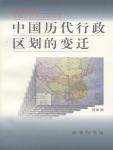Chapter 1 introduction
Unless the territory is particularly narrow, any country must divide its territory into hierarchical regions according to the needs of administrative management. This process is called administrative divisions, and these regions are called administrative regions. Administrative divisions and administrative regions can also be used in common, referred to as For administrative districts or political districts.
Administrative districts are created or abolished by national legislation and have the characteristics of variability. Therefore, the description of the actual situation of administrative districts must be related to a certain period or era.By the end of 1995, China had a total of 31 provincial-level administrative regions, 334 prefecture-level administrative regions and 2,143 county-level administrative regions.
Political districts also have the characteristics of inheritance and continuity. The current situation of Chinese political districts is the result of long-term development and evolution in history.For example, it has been 700 years since the creation of provinces in the Yuan Dynasty, and the boundaries of some administrative districts have been used for thousands of years, and the names and administrative offices of many counties have not changed for as long as 2,000 years.The long-term stability of the administrative region had a profound impact on the long-term continuation of the feudal society and on the regional differences in culture.To understand this influence, we must understand the evolution of historical political districts.
Whether the administrative division is appropriate or not is closely related to the consolidation of the country, the unity of the nation and the development of economy and culture.Therefore, administrative districts must carry out adjustments and reforms in a timely manner to meet the needs of continuous social progress.Learning from the past and knowing the future, in order to understand the present and plan for the future, we must analyze the evolution law of historical political districts.
Notes:
Notes:

